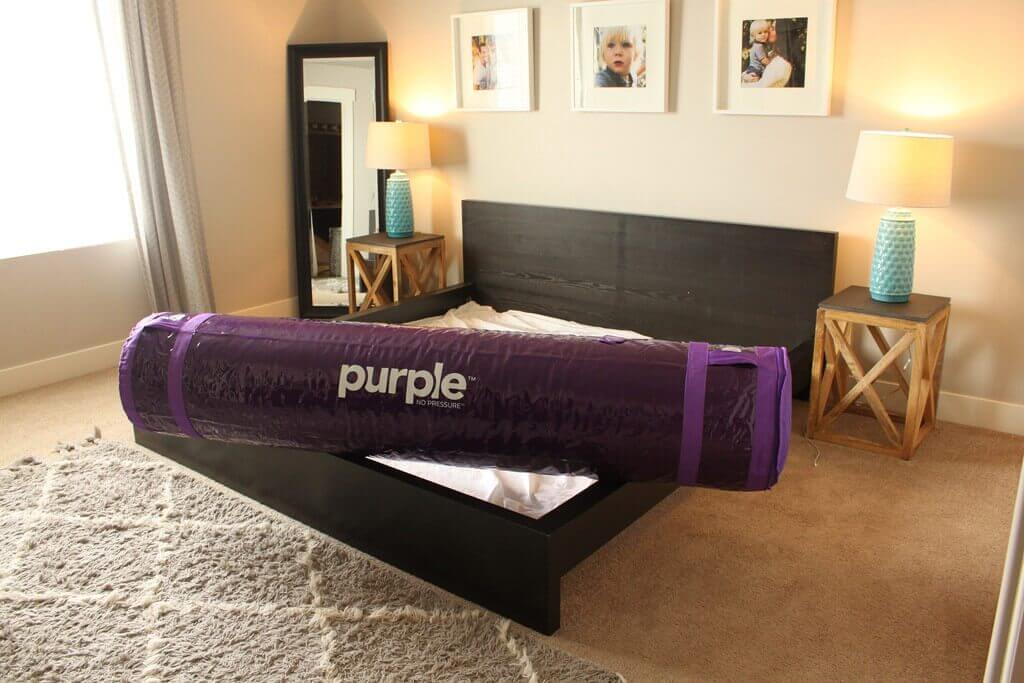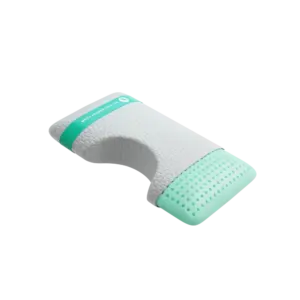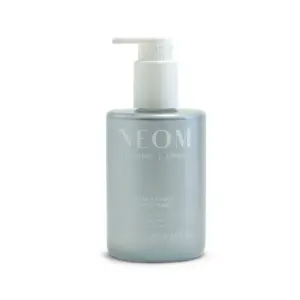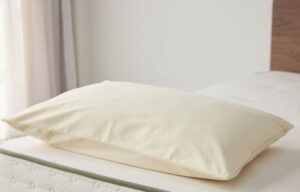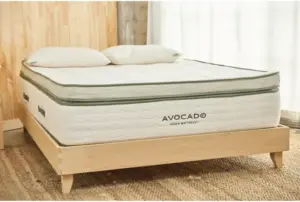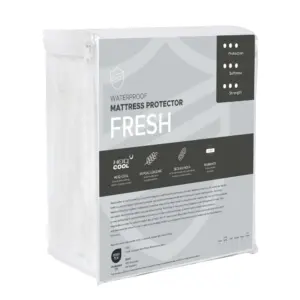Mattresses are expensive. Whether you are buying a regular mattress or a bed-in-a-box, you are not only investing a lot of money into it, but also expecting it to offer value for money. But to be able to offer full value for your money, the mattress has to last. So how long exactly does a mattress last?
Unfortunately, there is no one answer to this. The lifespan of a mattress varies depending on the type of mattress, quality of material, kind of use and care. By lifespan we mean how long the mattress can retain most of its original support and comfort. In case you didn’t know, the lifespan of a mattress affects us in a number of ways. A recent research on back pain found that worn-out mattresses can make the condition worse, while another research by the Oklahoma State University found sleep quality to be better when an old mattress is replaced with a new one.
What is the average lifespan of a mattress?
Mattresses usually last long enough before needing to be replaced. Depending upon the material, some mattresses may wear out sooner than others. However, when the mattress is made of high quality material, it tends to last anywhere between 7 and 10 years, and proper care can increase its lifespan well beyond ten years. Mattresses should usually be replaced every ten years if they get worn out.
Numerous factors contribute to the lifespan of a mattress, such as its construction, materials used, usage patterns, and maintenance. Higher-quality mattresses made with durable materials and superior craftsmanship tend to last longer than their lower-quality counterparts. Additionally, mattresses subjected to regular and proper maintenance, such as rotating and flipping, can experience prolonged lifespans.
However, it is essential to note that the lifespan of a mattress is not solely determined by a specific time frame. Individual factors, such as body weight, sleeping habits, and personal comfort preferences, can also impact a mattress’s longevity. Heavier individuals or those who frequently engage in activities like jumping on the bed may experience accelerated wear and tear, reducing the mattress’s lifespan.
Furthermore, mattresses are subject to wear and tear over time due to factors beyond user control, such as the natural aging of materials and exposure to environmental conditions. Therefore, even with careful maintenance, it is recommended to assess the condition of a mattress regularly and consider replacing it if signs of sagging, discomfort, or diminished support are evident.
Investing in a high-quality mattress can provide individuals with a comfortable and restorative sleep experience for an extended period. By understanding the average lifespan of a mattress and considering personal factors, individuals can make informed decisions when purchasing a new mattress, ensuring they receive the best value for their investment in a good night’s sleep.
The average lifespan of different materials
Different materials make the average lifespan of a mattress vary. Some of the common mattress types and their average lifespan are as follows:
Latex: Mattresses made of latex are superior to all other types, and usually last the longest. The average lifespan of a latex mattress is 15 years, and the layers can be replaced when they wear out. Moreover, to maintain uniform wear, the layers of a latex mattress can be flipped.
Memory foam: On an average, a memory foam mattress lasts about ten years. Even though it sags less than the other types, it needs to be flipped regularly to prolong longevity.
Waterbed mattress: Since these mattresses don’t have springs that can break with wear, they tend to last a little longer than regular mattresses. The lifespan of a waterbed mattress is usually no more than seven to nine years, even with proper maintenance.
Spring mattress: These mattresses are supported by coil springs that break with use and make the mattress sag. Even the best quality spring mattresses don’t last past seven or eight years with proper care.
Hybrid mattress: This type of mattress uses a pocketed coil support core and a comfort layer like latex or memory foam. On an average, a hybrid mattress can last up to six years if properly cared for, though the longevity depends upon the quality of material used to make the core.
What does mattress longevity depend on?
There are several factors that influence mattress longevity. They are:
Use: The more a mattress is used, the shorter it will last. Similarly, mattresses that are occasionally used (like a guest bed) will have a longer lifespan. The types of activities the mattress is used for also determine its lifespan to a certain extent. For instance, putting heavy objects on the bed can make it sag sooner than normal. Spilling food or drink on the bed can also weaken the material and shorten the lifespan of the mattress.
Weight: The pressure applied on a mattress affects its lifespan. Heavier people exert more pressure on a mattress, leading to sinkage and sagging, whereas lighter people exert less pressure, extending the lifespan of a mattress.
Care: Proper maintenance of a mattress extends the lifespan of a mattress by getting rid of dust, dirt, and germs. Putting a top sheet and changing it every couple of days ensures the longevity of a mattress.
When to replace a mattress?
There are some telltale signs that a mattress needs to be replaced. Some of the most common ones are sagging, bumps, lumps, and tears. Aside from that, there are physical signs that let you know it is time to change your mattress. Sleeping on an old, worn-out mattress deprives your body of support and comfort, resulting in aches and pains. Mattresses also tend to attract allergens, and it happens more when a mattress becomes old. Allergies, asthma, and other similar problems can result from sleeping on an old mattress.
On average, a quality mattress lasts 5 to 10 years. But with proper cleaning and care, the lifespan can be extended for a few more years.
How can I tell if I need a new mattress?
There isn’t a universally applicable life expectancy for a mattress because it largely depends on the quality, type, and the amount and type of use it gets. However, most experts suggest replacing your mattress every 7-10 years. But knowing when to say goodbye to your old mattress can be a tricky task. Here are some indicators that it might be time for an upgrade.
You’re Not Sleeping Well: One of the most telltale signs is a decline in the quality of your sleep. If you’re tossing and turning throughout the night or waking up tired and achy, your mattress might not be offering the support and comfort you need. Everyone has an occasional restless night, but if it becomes a consistent pattern, it’s time to consider a new mattress.
Visible Signs of Wear and Tear: Over time, a mattress can develop visible signs of aging like lumps, sagging, or even springs poking through the surface. If you notice any of these signs, it is definitely time for a replacement. Your mattress should maintain a consistent shape and firmness across its entire surface.
Allergies or Asthma Worsening: Over time, mattresses can become home to dust mites, mold, and other allergens. If you’ve noticed a recent increase in allergy symptoms or asthma attacks and you’ve ruled out other potential causes, your mattress might be to blame.
Your Body Has Changed: Changes in your health or weight might necessitate a new mattress. For example, people with more body mass need a firmer mattress to support them properly, while people with chronic pain or aging bodies might need something softer or with more support.
You’re More Comfortable Elsewhere: If you find that you sleep better in a hotel bed or even on a friend’s couch, it could be an indication that your mattress is no longer comfortable.
It’s More Than 7-10 Years Old: While there’s no exact expiry date, the National Sleep Foundation recommends replacing your mattress every 7-10 years. This timeline can vary depending on how well you care for your mattress and how often you use it, but it’s a good baseline to keep in mind.
Keep in mind that a good mattress is key to good sleep, and good sleep is key to overall health. So, investing in a new mattress when needed is not just an investment in your comfort, but also in your wellness.





